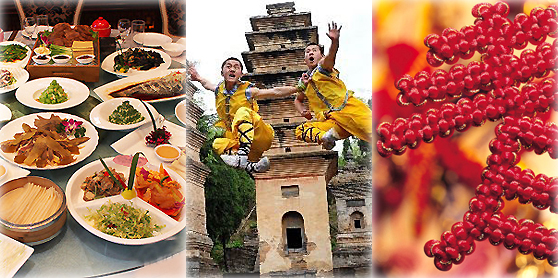Top 10 most familiar symbols of Chinese culture
- By Xu Lin
 0 Comment(s)
0 Comment(s) Print
Print E-mail China.org.cn, March 14, 2014
E-mail China.org.cn, March 14, 2014
With its "time-honored history," Chinese culture is rich in form and appealing to a worldwide audience. The latest China National Image Global Survey, jointly released by China's major think tanks, unveiled its top 10 symbols of Chinese culture as put forward by an international audience.
According to the survey, 61 percent of foreign respondents displayed a keen interest in China's culture and almost one third of them expressed the desire to learn Mandarin. Travelling to China as tourists is tempting as a cultural undertaking. As much as 59 percent of participants said that "getting to know about China's traditional culture" is the most important factor for them when visiting China as tourists.
In the eyes of international audiences, martial arts, a powerful form of Chinese Kong Fu, is the most attractive type of Chinese culture, followed by Chinese cuisine and the mysterious traditional Chinese medicine.
The influence of China's higher learning institutions and mass media products such as its films and literature scored the lowest among all the surveyed types of Chinese culture.
This is the second survey of its kind conducted by the Center for International Communication Studies of the China Foreign Languages Publishing Administration, the Charhar Institute and Millward Brown.
In the form of an online questionnaire, the survey involved a total of 3,017 citizens aged 18 to 65, covering seven countries, including the United Kingdom, the United States, South Africa, India, Russia, Brazil and China.
The following are the top 10 most familiar symbols of Chinese culture as chosen by international audiences.
Confucius and Confucianism(孔子、儒家思想)
Confucius and Confucianism [File photo] |
Percentage of respondents: 23 percent








Go to Forum >>0 Comment(s)